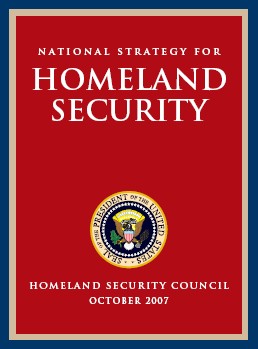The “Anything’s Possible” Counterterrorism Strategy
Perhaps the way we’ve arrived at considering spending billions on missile defense for commercial airliners and monitoring paintball games for signs of extremism is along the appealing path of “it could happen.” In the early days following 9/11, many of us in the policy community worried about the nature of follow-on attacks, which gave way to defensive measures based on scenarios, which led to ever more ominous scenarios, and ever more expensive countermeasures. Is this serving us well as an approach to Homeland Security?
To be sure, we have a lot of work to do and a lot of worthy work is underway at DHS, State, and Defense that is critical to combating terrorism. However, we should beware the tendency to shape our strategy based on the theory that “it could happen.” Could terrorists fire surface to air missiles at airplanes leaving LaGuardia? Yes. Likely? Hard to say. Worth $10 billion to reduce but not eliminate the possibility? Hardly.
So it bothered me when Paul J. Browne, an NYPD police spokesman told the New York Times this week, “One call one day may be the one that stops an attempt to destroy the Brooklyn Bridge.” He was justifying the ubiquitous ad campaign across the City’s subway system urging riders to “say something” if they “see something.” The motive initially makes sense: A complacent ridership risks missing indications of a conspiracy to bomb the subway trains. I suppose the assumption is that had the other riders on Spain’s train to Madrid on the morning of March 11, 2004, noticed the terrorists leaving their bomb-rigged bags, the concerned commuter would have alerted others and possibly avoided the carnage.
Last year, according to NYPD, 1,944 subway riders “said something.” By calling 1-800-NYC-SAFE, subway riders warned of “people seen counting in the subway.” Callers worried this was an antecedent to something nefarious and deadly. In all, the hotline received 13,473 calls in 2007, with 644 of those triggering investigations. (Of these calls, 45 were transit related.)
While some crimes were inadvertently uncovered by the callers – ranging from selling false IDs to illegal fireworks peddling – none of the calls resulted from or discovered actual terrorism threats. NYC’s subway riders were applying their own “no-fly list” to other riders. 13,373 callers would have sent fellow riders to secondary, but would have found no terrorists. This is the trickle down effect of “it could happen.”
The “it could happen” approach results from a steep national learning curve about terrorism that persists more than six years after 9/11. Terrorism is a complicated issue, and one that continually evolves. No doubt the general public has little time to read up on radicalism or studied analyses of terrorist behavior. But if our homeland is secured by an “anything’s possible” strategy, we’ll wind up doing at least one of three things:
– Going broke
– Tying up anti-terrorism assets with non-threats
– Eroding our sense of community and eventually our ability to be resilient if we are attacked again
None of these outcomes will happen quickly. However, the prospect does force a cost-benefit analysis of a new kind. Is it worth $10 billion to reduce the chance of a successful MANPAD launch against an airliner? Does a terrorism hotline make us safer if we don’t know what to look for?
National strategies – from Homeland Security to housing programs – require tradeoffs. But assessing the costs and benefits accurately requires balancing near-term and long-term needs with a sober assessment of the strategic threat. Seven years into the national effort to secure the homeland, we still seem to be struggling to understand this equation.
UPDATE: I will concede this: the terrorism hotline serves another potential benefit beyond empowering subway riders. The notion of an overly alert ridership has the potential to introduce enough uncertainty on the part of a perpetrator to second guess the viability of an operation. The flipside is that terrorists become more covert to further lower their profiles. The most effective measure would force a would-be terrorist to take more steps to avoid detection, thereby providing more indicators of a planned attack.












